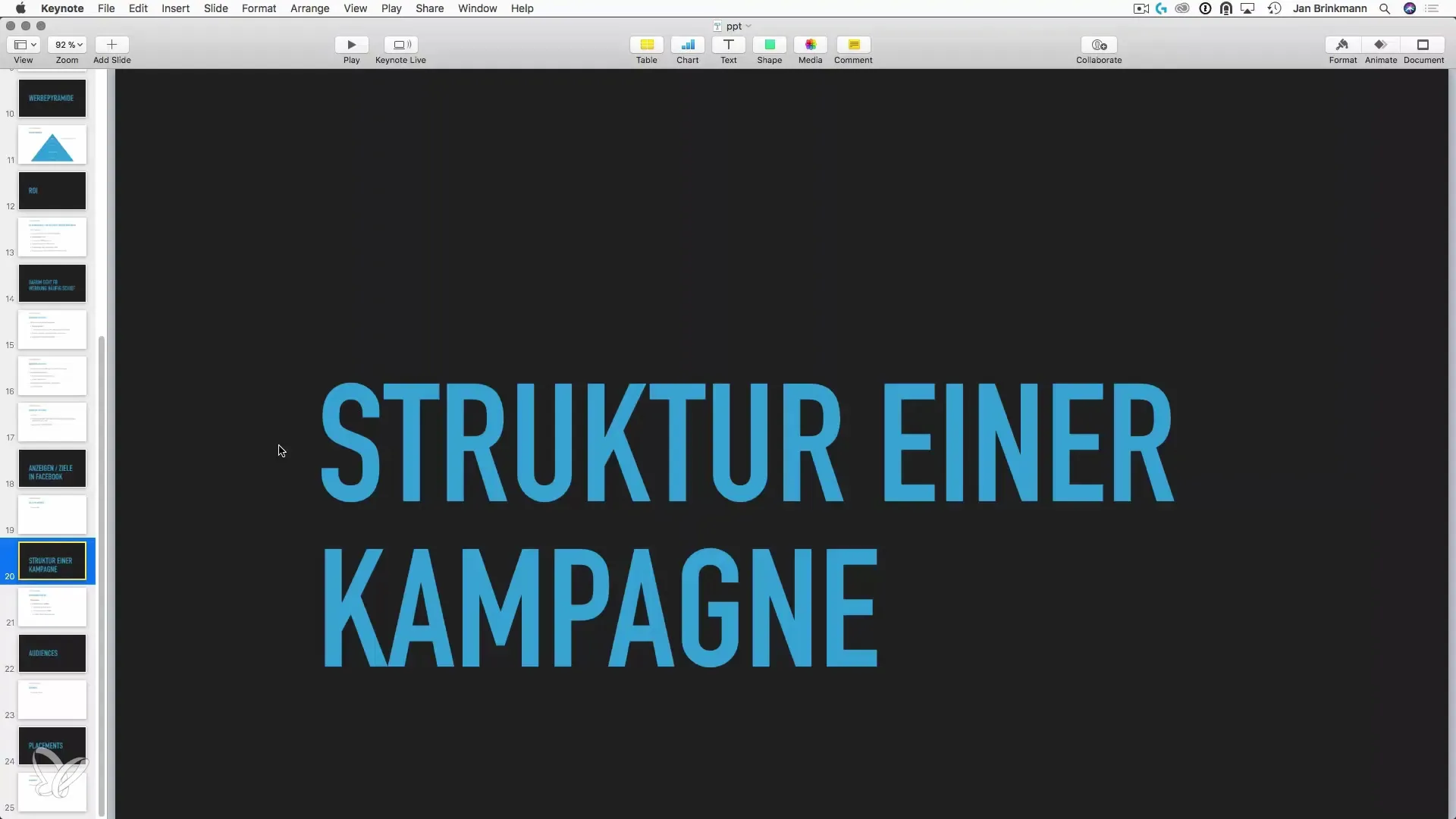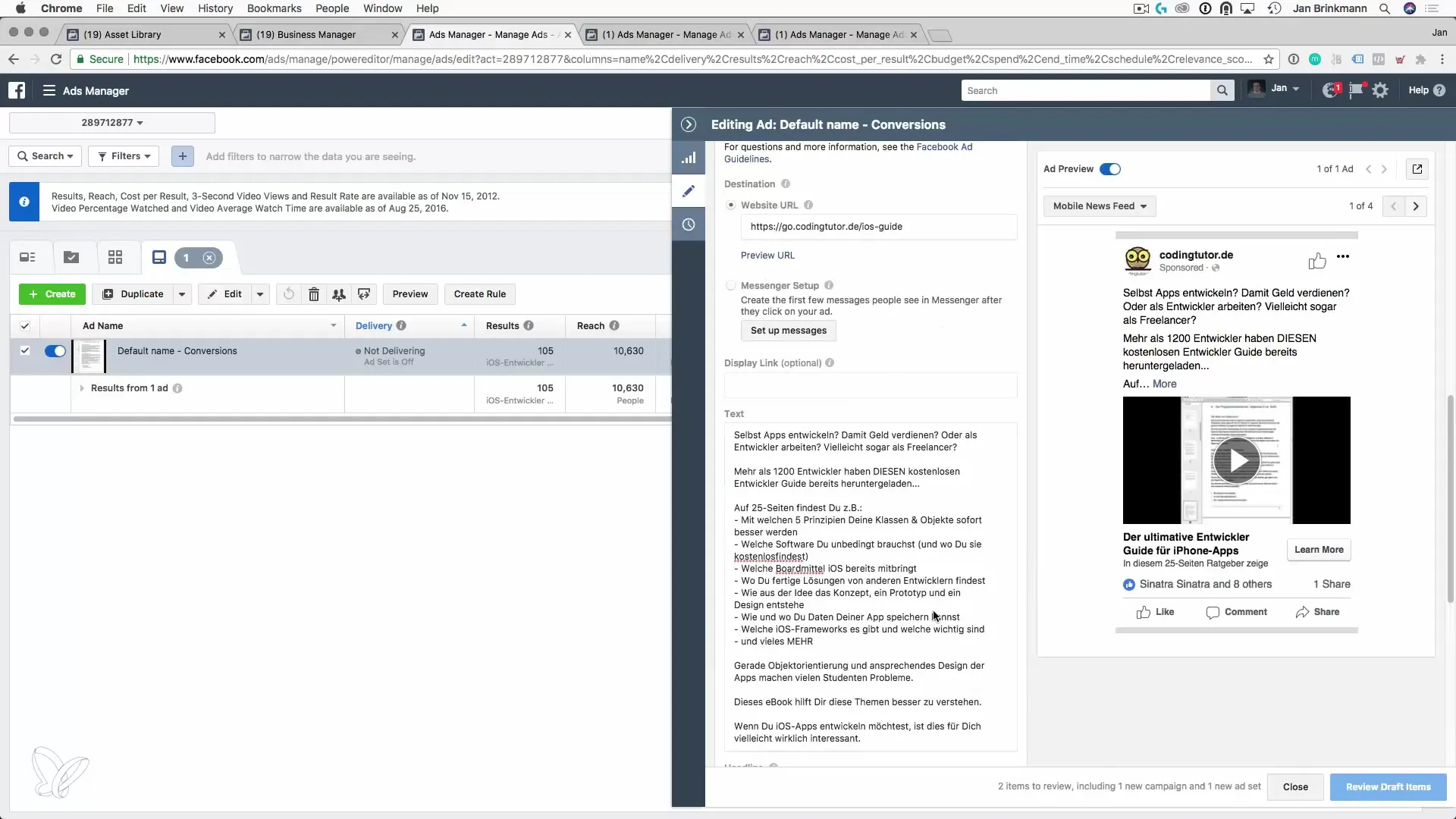Campaigns on Facebook follow a clear structure that is essential for effective management of your ads. In this article, you will learn everything about the different levels of a campaign that are crucial for the success of your customer acquisition.
Key insights
- A campaign consists of three main components: the campaign itself, AdSets, and Ads.
- The campaign defines the marketing goal, while the AdSets segment the target audiences and the ads within the AdSets can be tested.
- The design and analysis of the ads are crucial for measuring success.
Understanding Campaign Structure
To work successfully with Facebook campaigns, you need to understand the structure correctly. First, there is the campaign itself. It is the top level and encompasses all the marketing goals you want to achieve. An example could be the goal of promoting conversions or driving traffic to your website.

Below this is the AdSet. Here you define which target audience should be addressed. This means you define target audiences, for example, based on interests or demographic characteristics. For example, if you sell a T-shirt, you might want to target people interested in BMW or sports enthusiasts. The selection of the target audience is crucial and varies depending on your product offering.

Depending on the AdSet, you can also set different budgets. For example, if you have two AdSets and each has a daily budget of 20 euros, that totals a budget of 40 euros per day. This allows you to test different strategies in parallel.
Create and Test Ads
The ad is the lowest level in the campaign structure. Here you create the actual ads that your target audience sees. You need to ensure that you test different ads within an AdSet. If you want to find out which image works better, each image should run in a separate ad within the same AdSet.
An important concept when testing is called A/B testing. This allows you to compare the performance of the ads over a specific period, for example, 4 to 7 days. This way, you achieve more precise results about which ad is more effective.
Keep in mind that Facebook favors ads that perform better, which can influence your testing strategy. To obtain realistic comparison data, you should use the same frequencies for all ads in the test.
Create the Right Appeal
Within the ads, you can use texts, images, or videos that are displayed to the users. Make sure that your headline, description text, and call-to-action are well designed. An effective appeal increases the likelihood of interaction.
You can also add links or additional tracking parameters, such as UTM parameters, to analyze your marketing efforts and assess their profitability. This additional information helps you measure the success of your campaigns.

Conclusion on Campaign Structure
A structured approach to Facebook campaigns is crucial for your marketing success. By understanding the hierarchy of campaigns, AdSets, and ads, you can precisely address your target audience and increase the effectiveness of your campaigns. A/B testing and the right appeal ensure that you get the most out of your ads.
Summary – Structure of Facebook Campaigns: A Comprehensive Guide
By understanding the campaign structure, you can achieve your marketing goals more efficiently. Use the different levels to specifically address your target audiences and optimize your ads.
Frequently Asked Questions
What is the main structure of a Facebook campaign?The main structure consists of campaigns, AdSets, and ads.
How can I define my target audience for Facebook ads?You define the target audience within the AdSets by selecting interests and demographic characteristics.
What is A/B testing in Facebook campaigns?A/B testing compares the performance of different ads within the same AdSet.
Why are tracking parameters important?Tracking parameters help you analyze the success of your campaigns and assess their profitability.
How much budget can I set for Facebook ads?You can set a separate budget for each AdSet, for example, 20 euros per day.


